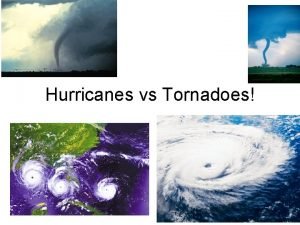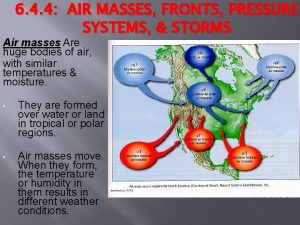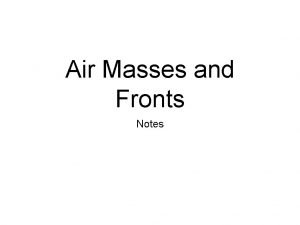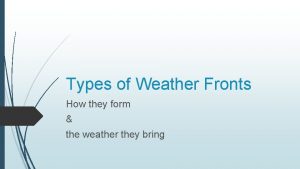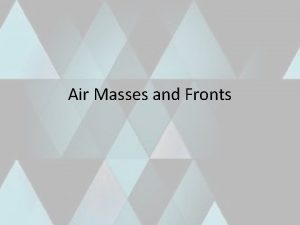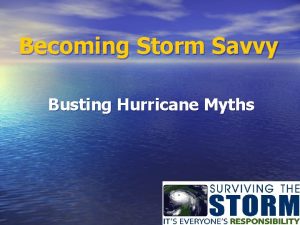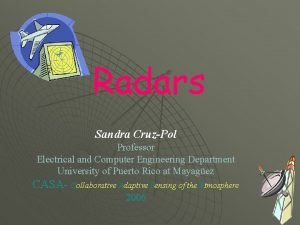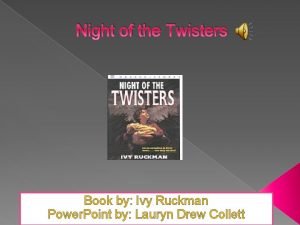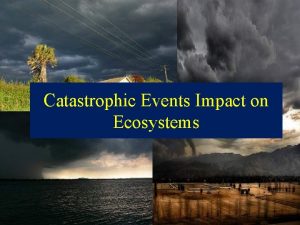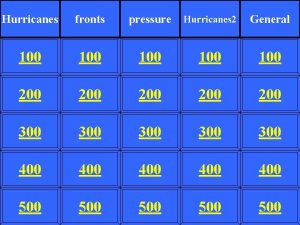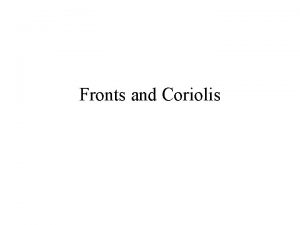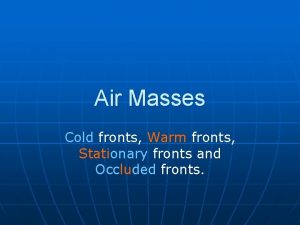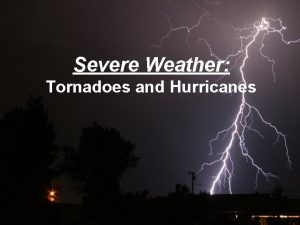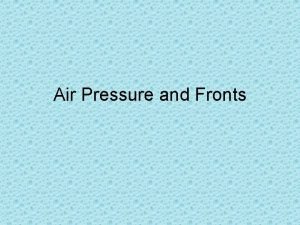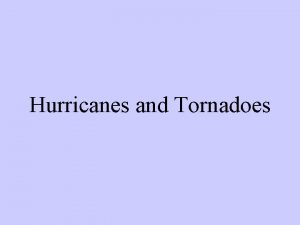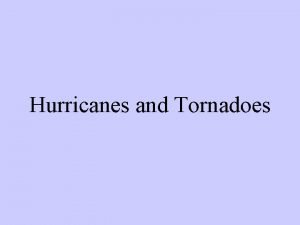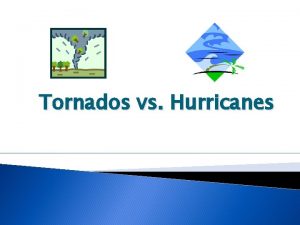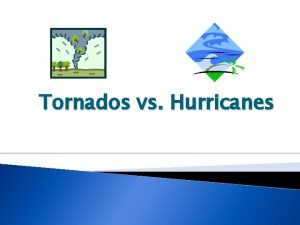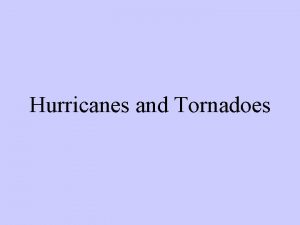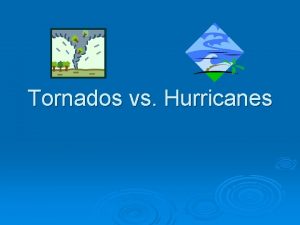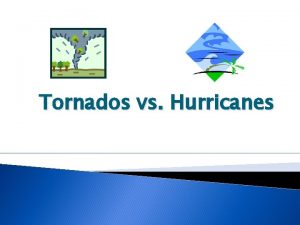Air Pressure Fronts Tornadoes and Hurricanes Air Pressure















- Slides: 15

Air Pressure, Fronts, Tornadoes and Hurricanes

Air Pressure • Air pressure is the amount of pressure air puts on us and the things around us. • Hot air contains less pressure because the air molecules are spread out • Cold air has more pressure because the air molecules are more condense and close together. • The higher in elevation you are the less air pressure you feel. Think of it as the air is pushing down on you like gravity.

Fronts • Fronts are air masses that move a crossed the surface and above the surface that create different weather patterns. • 4 Types of fronts; Warm, Cold, Occluded and Stationary

Warm Fronts • Warm Fronts are when warm air masses move into a area where cool air is located. The warm air then moves over the cool air causing it to condense and cool off. This creates clouds and precipitation.

Cold Fronts • Cold fronts are the opposite of warm fronts because the cold air is moving into an area where warm air is located. The cold air then pushes up the warm air causing the same effect of precipitation and condensation(clouds) build up.

Cold Front

Occluded Fronts • Occluded fronts are when cold air traps warm air by surrounding from front to back. The Warm air then has to slowly cools and mixes as it rises causing lots of rain and snow.

Stationary Front • Stationary fronts are when two air masses meet each other but are unable to move past one another. This usually causes it to be very cloudy and wet.

Symbols

Review • During a cold front what type of precipitation usually occurs? A) rain B) Thunderstorms C) mist • During a warm front what weather is moving in? A) warm B) cold C) Snow • What happens to a warm air mass that is being pushed by a cold air mass? A) Rises B) falls C) stays in place • What happens to a cold air mass that is being pushed by a warm air mass? A) Rises B) falls C) stays in place

Reveiw • What is an Occluded Front? A) when warm air traps cold air B) when cold air traps warm air C) when neither can pass. • During a stationary front what weather occurs? A) Cloudy and snowy B) Cloudy and wet C) hot and humid

Tornadoes • A Tornado can only form from a cumulonimbus cloud. • Tornadoes are better know as funnel clouds • Tornado occur in the mid west more than anywhere because of the polar weather from Canada coming down and mixing with the warm and humid weather of the west. This causes a very active storm.

Tornadoes

Hurricanes • Hurricanes form when a group of storms meet going in opposite direction. They collide and begin to spin. • Hurricanes can only form over warm tropical water where low pressure occurs. • A hurricanes winds can reach up to 200 mph but after 75 mph it is considered a hurricane. Before 75 mph it is called a tropical storm.

Hurricanes • Hurricanes gain strength over warm water but once they move to land they begin to die. • Hurricanes are a low pressure system but the eye of the hurricane is high pressure and has no wind. In the eye of the hurricane, the weather can be clear and calm.
 Compare and contrast signal words
Compare and contrast signal words What is compare and contrast text structure
What is compare and contrast text structure Similarities tornadoes and hurricanes
Similarities tornadoes and hurricanes Air masses in north america
Air masses in north america Fronts and pressure systems
Fronts and pressure systems Mt air mass
Mt air mass Low pressure air mass
Low pressure air mass Air masses in north america
Air masses in north america 4 types of weather fronts
4 types of weather fronts Types of air masses
Types of air masses What does a wind vane measure
What does a wind vane measure Hurricanes myths and facts
Hurricanes myths and facts Polar air masses have low air pressure true or false
Polar air masses have low air pressure true or false Sandra cruz denton tx
Sandra cruz denton tx 1980 grand island tornado pictures
1980 grand island tornado pictures Tornadoes can negatively affect an ecosystem when -
Tornadoes can negatively affect an ecosystem when -


